This year, FDIC International offered 25 hands-on training (H.O.T.) evolutions and taught more than 4,000 firefighters from both national and international fire departments over a two-day period. We sat down with some of our top-shelf H.O.T. lead instructors to discuss the importance of their class topic. Here is a look at H.O.T. 2022.
Flashover and Modern Fire Behavior Training
Lead Instructor: Administrative Deputy Chief Joseph Berchtold, Teaneck (NJ) Fire Department
“Flashover is a growing concern in today’s world. With modern home furnishings and the fact that our buildings being built today are not made to last, firefighters are in real danger. The problem is further compounded by the ‘Well, we always did it that way’ mindset. No matter how much we tell firefighters that the fire you fight today is not the fire you fought 20 years ago, it just doesn’t sink in. I still every now and then go back and watch the Vincent Dunn tape on flashover, which was done in 1986. He got it back then. He saw how fires were changing, so why 30-plus years later are firefighters still not getting the message? Firefighters still want to be aggressive. I get it. That’s what draws us to this profession. However, more often than not, we are unable to use these old ways of fighting fire to fight this modern fire.
“Our mission with flashover training is to change this old-school mindset about fire behavior. It’s like a friend always says, ‘You start with a small snowball at the top of a hill and you push it and push it and at one point or, should I say, years later, that snowball finally starts to make its way down the hill all on its own. You now only hope that when it hits the bottom, it is still that same snowball that you started.’
“So, we continue to change the hearts and the minds of anyone who will listen to our message. That fire burns hotter and faster and is more deadly than ever. That only through training and recognition on the fireground might you be able to keep your members safe.”
| Hands-on Training Contributors | |
| AJax 2. Akron Brass 3. Amkus 4. Blowhard Fans 5. Braskey Products 6. Bullex (Lion) 7. Bullard 8. Central Indiana Hardware 9. CHEP for wooden pallets 10. Council Tools 11. DeWalt Tools 12. Desert Diamond Industries 13. East Coast Solutions 14. Eastern Fire Equipment 15. Elkhart 16. Fastenal 17. Fire-Vent 18. Fire Wipes 19. Flashpoint Fire Equipment—Fire Dynamics 20. Gaumard Scientific 21. Glassmaster-Wehr Engineering 22. H&H Medical Corporation 23. High Lift Jack Company 24. Hix Wrecker Service 25. Holmatro 26. Hurst Jaws of Life 27. Husqvarna Saws (Team Equipment) 28. Industrial Scientific 29. Jeff Silvey Custom Fabrications 30. JYD-ESI Equipment 31. Key Fire Hose 32. KO Fire Curtain 33. Leatherhead Tools | 34 Lion (Bullex) 35. Luna Inc. 36. Motorola 37. Monarch Beverage Company for wooden pallets 38. MSA 39. North American Rescue 40. NA Rescue 41. Nasco Healthcare 42. Nupla Tools 43. Paratech 44. Petrogen 45. Phokus Research 46. PMI 47. Rescue 42 48. Rescue Essentials 49. Res-Q-Jack 50. Royal Spa (B & D Development) 51. Safe Guard Medical 52. Scott Safety—3M 53. Simulaids 54. Snap-tite Hose 55. Stanley Black & Decker Tools 56. Streamlight 57. SVI 58. Tac Med Solutions 59. Tempest 60. Team Equipment (Husqvarna) 61. Tech Gen Gear, Fire Dex Corp 62 TFT (Task Force Tips) 63. Tri Tech Solutions 64. Tru Clot 65. Turtle Plastics 66. VP Racing Fuels 67. Ziamatic |
RIT Under Fire
Lead Instructor: Gary Coney, Program Manager, Illinois Fire Service Institute RIT Program/Captain, Chicago (IL) Fire Department
With today’s state-of-the-art fire gear and air packs, firefighters are pushing in fires faster and going deeper into buildings to find fire without being affected by the conditions around them. Most new buildings use lightweight construction that fail faster under the heavy fire loads of today’s modern household furnishings. Because of these two factors alone, it is not a matter of IF but rather WHEN firefighters are going to become lost or trapped in a fire building. My team and I teach all firefighters how to remove a down firefighter on their worst day possible. All of the RIT rescues that the students attempted in our class are based on an actual line-of-duty death (LODD). By focusing on these scenarios and honing the techniques, we hope to decrease if not eliminate LODDs due to untrained rescuers.”
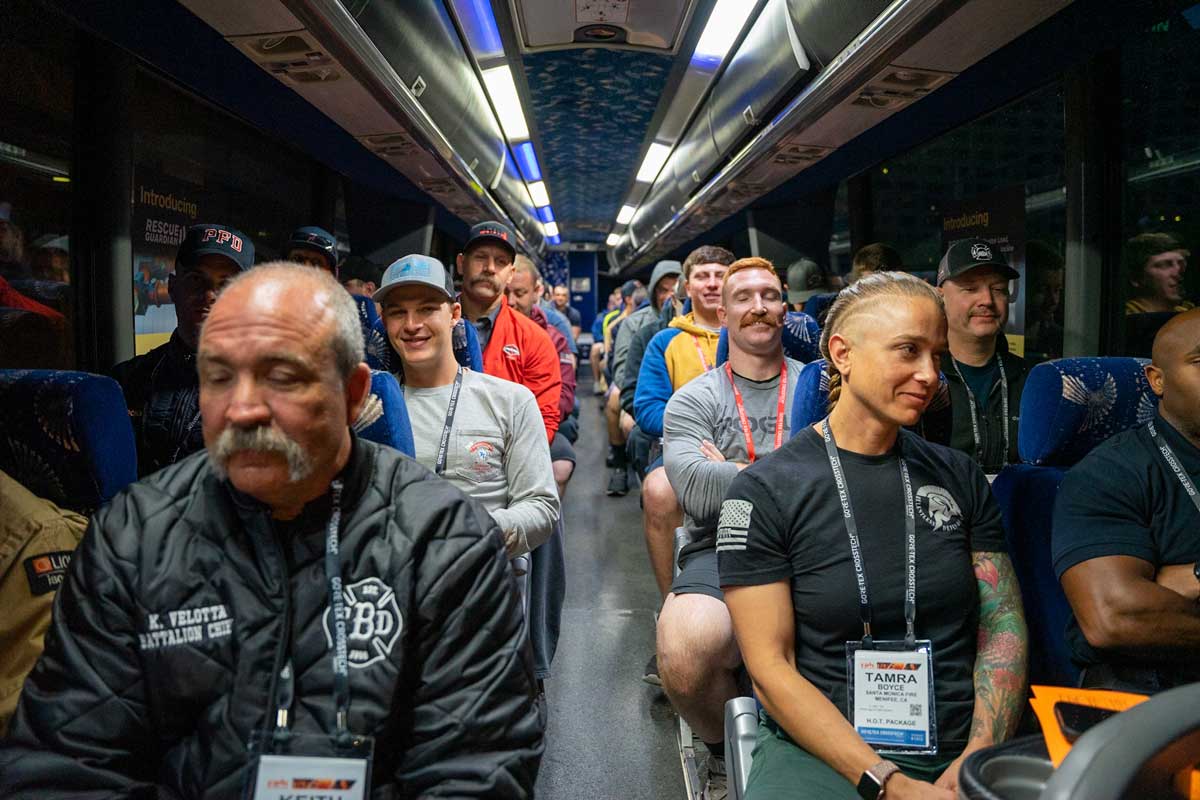
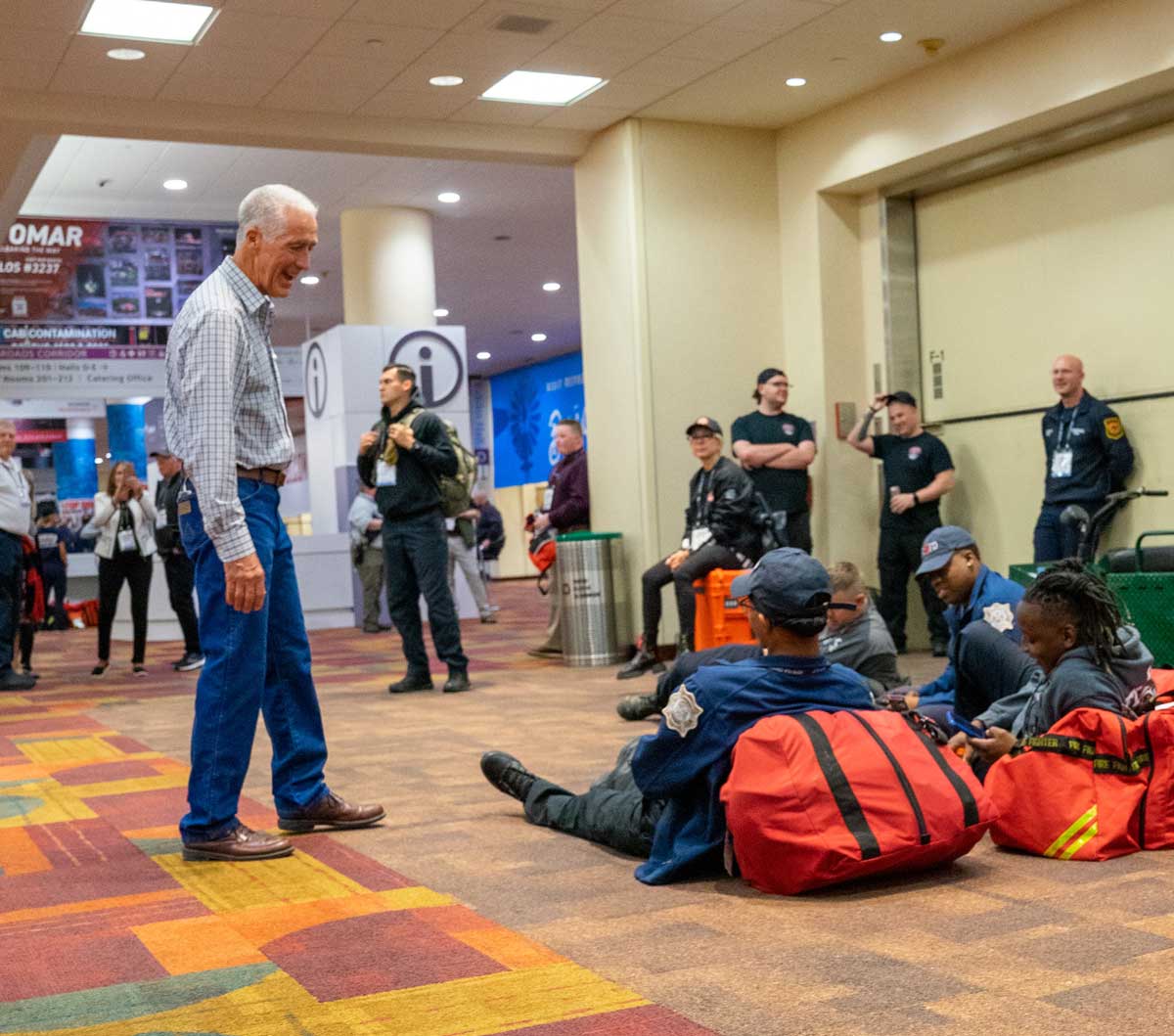
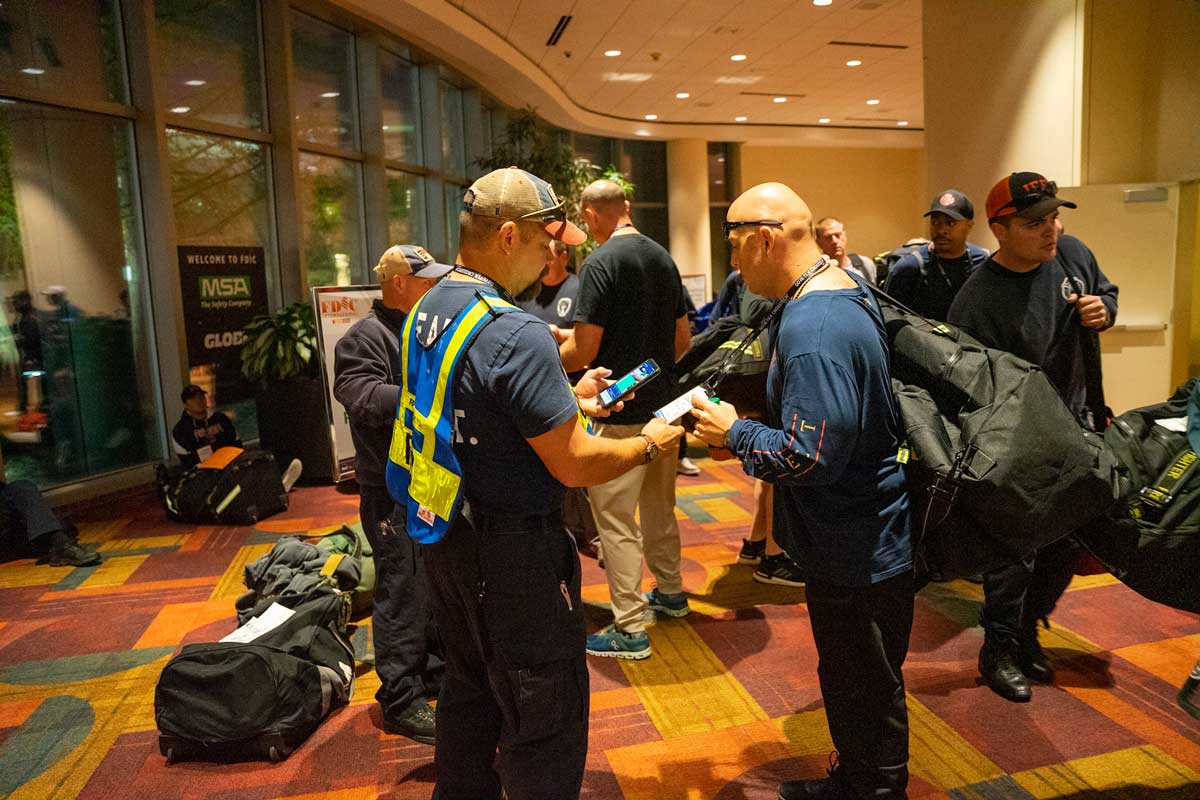
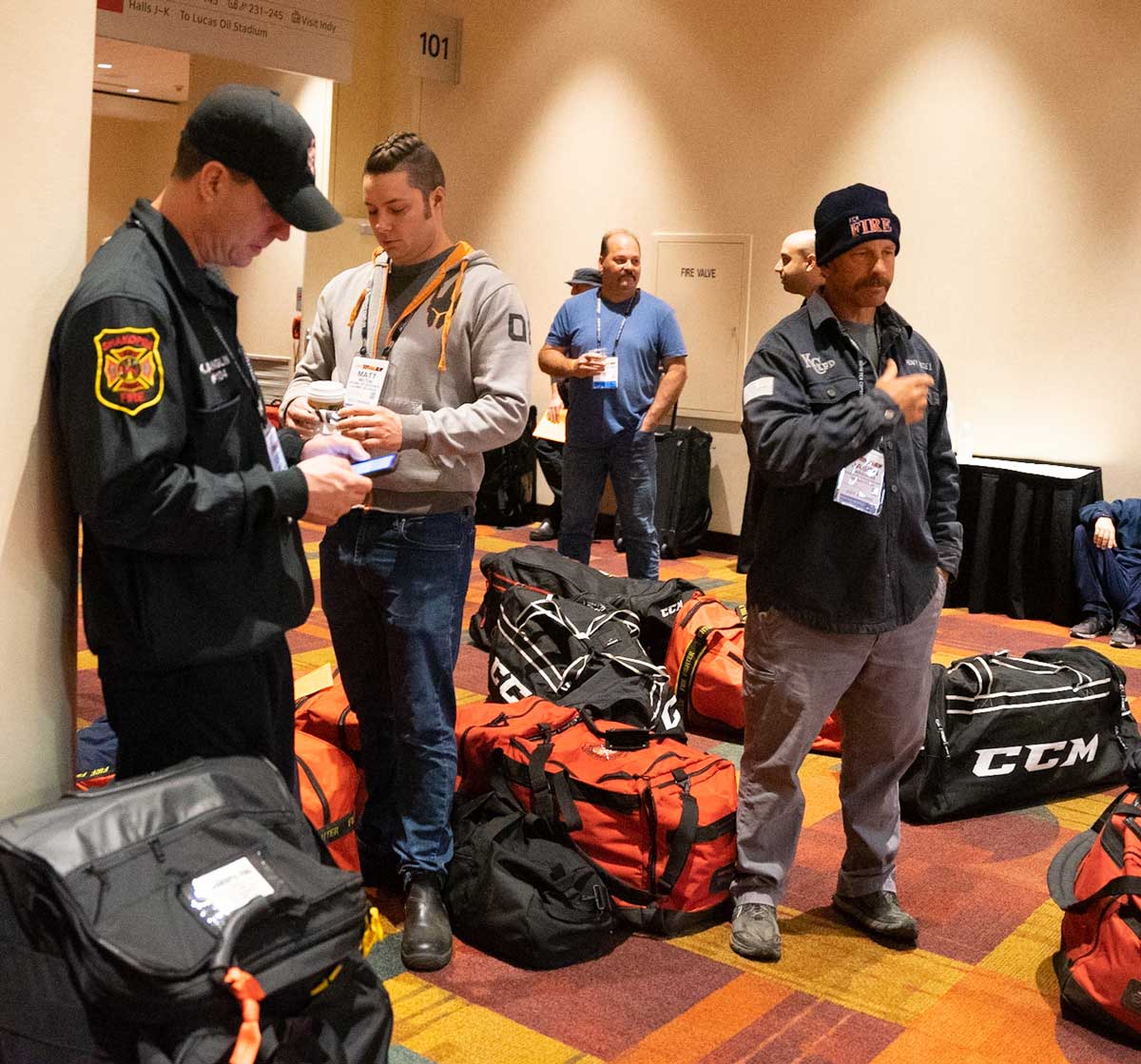
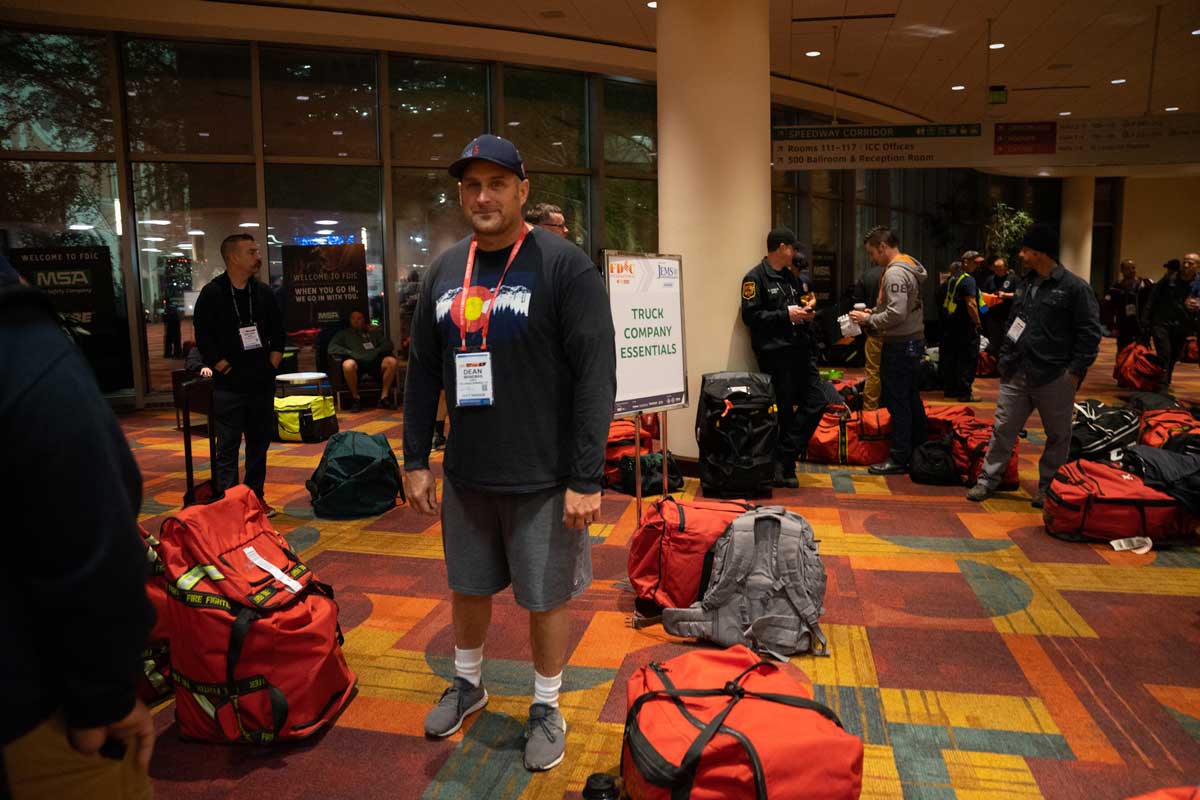
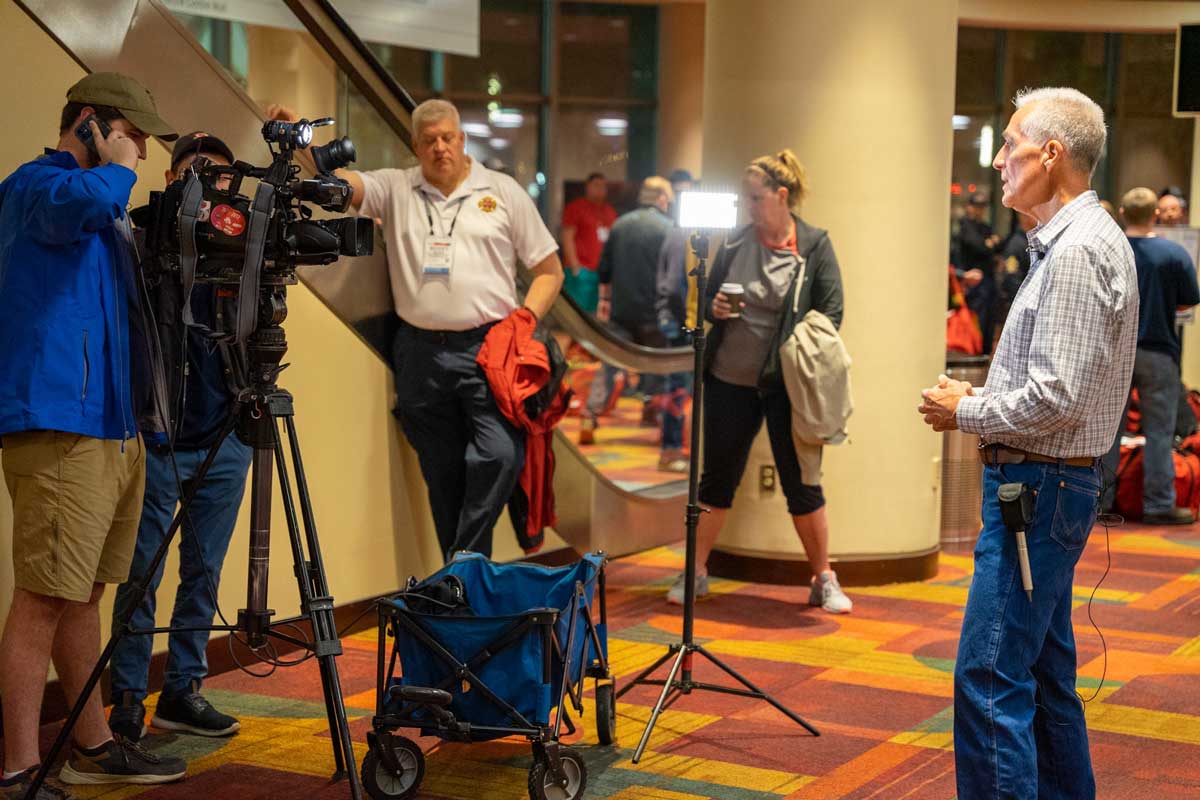
Elevator Emergency Management-Operations
Lead Instructor: Firefighter Michael Dragonetti, Stamford (CT) Fire Department
“I didn’t pick my class topic; it sort of picked me! There was no formal training in the fire service for handling elevator emergencies when I came on the job in 1995, and I witness some really dangerous practices in the field. I spent almost a decade in the elevator industry, in NYC, prior to going to the fire service. My class started out with just answering question from firefighters on my job in passing who were desperate for information regarding safe practices with a stuck occupied elevator. So, in 1999, I developed a program based on ASME A17.1 and ASME A17.4, and the rest is history. I am both honored and humbled to be a nationally recognized subject matter expert in this discipline.”
Man vs. Machinery
Lead Instructor: Captain Mark Gregory, Fire Department of New York
“The topics covered in Man vs. Machinery are situations that occur all across the nation but are generally not drilled on until one is faced with these calls. The training and skill sets that have grown out of the Man vs. Machinery training over the years have provided noninvasive methods that have removed individuals from situations in a shorter period of time. Ring removals, for instance, have yielded successful results with valuable property saved and techniques used that did not put the patient in any further harm.
“Tool selections and advancements have come out of this training program. We used to be limited to the tools that we could use and had to compensate for their reactions. Torches, saws, and hydraulic cutters were once considered our ‘go-to’ tools for impalements. Today, tools such as the band saw have been tried and true to provide smooth and efficient disengagement from impalement situations.
“The instructors of PL VULCAN Fire Training have many years of experience from fire departments across the entire country. Our course was designed around factual incidents that we or our respective departments/companies operated at. We teach the Man vs. Machinery program across the United States, Canada, and even Japan. Our instructors are constantly striving to figure new disentanglement methods to pass along to our students.”
Commercial Fireground Operations
Lead Instructor: Captain Aaron Heller, Hamilton Twp. (NJ) Fire District #9
“I picked this topic because I have seen far too many departments across the country employ ineffective tactics at commercial fires. This has resulted in numerous firefighter injuries and the loss of properties that could have been saved. Our program aims to give firefighters and officers a better understanding of simple tactics they can immediately address on their return from FDIC. As our communities grow, we see far more commercial development worldwide, which increases the probability of these fires. With this training, we’re preparing our firefighters for the present and the future.
“I have worked for 30 years in a community with a very large commercial, retail, and industrial fire load. We have experienced several of these fires in my career, at which I have been a firefighter and a commanding officer.”
Advanced Vehicle Extrication
Lead Instructor: Battalion Chief (Ret.) Leigh Hollins, Cedar Hammock (FL) Fire Rescue
“I selected my HOT class topic (Extrication) way back in 1998, which is the first year I taught extrication as an FDIC H.O.T. class. I selected the topic because it was one of two topics that I felt were my strongest suits. The other was pumping fire apparatus. I had written about both topics for Fire Engineering, and I taught pumping skills as a H.O.T. class at FDIC with FDNY’s Andy Fredericks in 1997. In mid-1997, former FDIC Director Bill Manning and I discussed teaching a School Bus Extrication H.O.T. class the next year and, as they say, the rest is history. My crew and I have been teaching some form of extrication training as a H.O.T. class at FDIC every year since.
“It is important in today’s fire service because most fire crews respond to more vehicle crashes than they do fire calls, so the sheer volume of calls requires one to be proficient at a skill such as extrication. The other reason is that technology moves at a fast pace, and responders need to keep up to date about vehicle construction techniques as well as the various systems in vehicles today and how they affect an extrication operation.
“I have attended various extrication classes throughout my 37-year fire service career, which began in 1976. About 12 years into my career, I began to study the subject of extrication on my own by watching videos (VHS) and reading any articles I could find in magazines. I also started teaching the subject and when I was promoted to training director at Cedar Hammock (FL) Fire Department in 1991. I was able to develop some of my own techniques and really practice all facets of the extrication discipline because I would be teaching all three shifts at the department; therefore, I would practice every technique we trained on or developed three times, enhancing my hands-on knowledge a great deal.”
| Donated Equipment for Hands-On Firefighter Training | |
| Brooklyn FD Brown Twp FD Brownsburg Fire Territory Buck Creek Twp FD Carmel FD Columbus FD Columbus Twp FD Crawfordsville FD Decatur Twp FD East Madison Fire Territory Edinburgh FD Elwood FD Fishers FD German Twp FD Green Twp FD Greencastle FD Greenfield FD Greenwood FD Indianapolis EMS Indianapolis FD | Lafayette FD Lake Hills FD Madison Twp FD Martinsville FD Mooresville FD New Whiteland FD Nineveh Twp FD Pittsboro FD Terre Haute FD Vernon Twp Fire Territory Wayne Twp FD Westfield FD Whiteland FD White River Twp FD Whitestown FD Zionsville FD |
Complete Extrication–Routine to Complex
Lead Instructor: Captain Mike Huffman, Harlem-Roscoe (IL) Fire Protection District
“Not every accident is a single-vehicle accident. There are more and more people commuting on the roads each day where traffic accidents can be multivehicles, vehicles and heavy trucks, and buses involved. Being prepared for complete extrication is essential for today’s first responders. Over my 29 years in the fire service, the communities I serve cover portions of interstate and commercial areas, where I’ve seen crashes from routine to complex.”
Drilling at the Speed of Flashover
Lead Instructor: Captain Scott Kraut, Fairfax County (VA) Fire and Rescue
“I chose the class as a result of over a decade of research into the physiological and psychological factors that affect our decision-making processes on the incident scene. I lectured several years on the topic at FDIC and really wanted to do the H.O.T. program to demonstrate the application phase. The topic has come to light over the past decade in both the law enforcement and military arenas but is equally if not more applicable to the fire service. We are called on to make critical decisions in a hostile and unforgiving environment, and our margin for error is very thin. The fire service must take into account the physical and emotional stressors that are placed on us during these events and train for fluency (accuracy and speed) in an effort to combat those stressors. If we continue to train and get the repetitions in for those tasks that we must perform on the incident scene, we are more likely to be successful when our protocols do not fit the environment we are faced with.
“I have spent many years studying how we can train to this level, and we attempted to demonstrate that in our hands-on class. All my instructors are well-versed in this type of training, and we take great pride in our ability to get the students through the stressful environment that we place on them in training. Our overall goal is to have the students succeed in training so that it will transfer to reality when they are faced with those incidents.”
Active-Shooter Response for the First-Due Company
Lead Instructor: Lieutenant Mark Litwinko, Ft. Wayne (IN) Fire Department
“My interest in the Rescue Task Force began as a conversation on the future of public safety, being aware of events that were taking place, moments in time when I was seeing the need for public safety to be united and integrated in our responses. The proverbial ‘line in the sand’ that made an incident a fire call vs. a police call seemed to be eroding away. Events like Columbine, the Boston Marathon bombing, the Pulse nightclub, and the Las Vegas shooting all showed public safety agencies being thrust into a scene of chaos while being expected to work collectively to accomplish a common mission: mitigate the treat, treat the victims, and save lives. It became clear that our world of public safety was changing, and so must we.
“Unfortunately, in the fire service, ‘change’ can be slow and at times nonexistent. This reluctancy to change is often mislabeled as ‘relying on our traditional tactics.’ But, there is nothing traditional about this job anymore. The structures in which we battle fires are not built as they were when we developed our traditional tactics. Lightweight construction and synthetic materials are no longer unique but the norm. The vehicles we find ourselves cutting apart to free a trapped occupant are not the vehicles of the 1990s or early 2000s. Hybrid and fully electric vehicles are presenting new hazards in their rapidly changing technologies, and we must adapt to it.
“Now, over the past 19 years, we are seeing the rising frequency of active assailant or active shooter events unfolding across the country. We are now seeing yet another change. We are now faced with a new threat environment in which we are being expected to operate. The traditional tactic of staging and waiting for our law enforcement partners to enter these high-threat scenes, rendering them completely safe and secure before we even consider moving in to provide aid to the victims, is no longer an acceptable practice. Studies and statics have shown that many casualties of an active assailant or active shooter event often have life-threatening injuries that can be treated aggressively using basic life support tactics at the point of wounding. But it must be done quickly, which doesn’t often happen with the ‘stage and wait’ tactic. This quick and aggressive care, combined with rapid evacuation to a definitive triage area in a safe and secure location where we can begin ALS treatments, is proving to save lives. ‘Stop the bleeding, keep the breathing, and get them leaving’ is becoming the mantra of many instructors teaching the Rescue Task Force framework. The concept works because as a public safety community, we are instituting aggressive, proactive, and integrated joint response protocols to ensure that we are doing the most good for the most victims in the quickest amount of time. It is only through teamwork that we will overcome the chaos forced on us during these types of incidents.
“As a lieutenant and 16-year veteran with the Fort Wayne (IN) Fire Department and an 11-year tactical medic with the Fort Wayne (IN) Police Department, I have often found myself on incidents and in environments where the threat profile was well outside the ‘norm’ of a typical fire or EMS call. Working in the direct and indirect threat zones to provide aid and trauma care to the injured is expected, achievable because of the security element that surrounded me and the cohesive understanding of tactics, roles, and assignments. The time I have spent working cohesively with our police department’s Emergency Service Team, being part of the integration of specialties that exist has been a unique experience. The knowledge I have gained over the years with this team, learning their tactics and sharing with them techniques and tactics unique to the fire service, has had immense value in my daily duties. Stepping back into my regular lieutenant/medic/firefighter role and making what would be termed a routine fire run or EMS call that perhaps includes being confronted with a violent patient or unstable environment, I fall back to my experience and my training–able to gain control of the scene, working collectively with my crew and police officers when needed. Making these complex, situationally difficult incidents that often require resources from a multitude of agencies solidified my desire to become educated and eventually educate others in the need for the integrated response of public safety agencies.”
Flowing and Going: Search and Extinguishment on the Fireground
Lead Instructor: Captain Dustin Martinez, Cobb County (GA) Fire and Emergency Services
“Just as any other department, our organization was looking at how to incorporate the Underwriters Laboratories studies with our fireground experiences. The questions kept coming up of ‘when would we VES vs. traditional search?’ and ‘When would we decide to use an exterior water vs. interior, and how does it affect the search team?’ As scientific research continues to produce information that both validates proven tactics and introduces new concepts, it still is all in support of these two essential tasks: search and extinguishment. This class combines an instructor cadre from opposite ends of the country, with one common goal: improve conditions for unprotected interior occupants while simultaneously working to locate and remove them. By combining purposeful search techniques including VES, with the correct water applications based on the conditions encountered, this class combines both search and suppression in a coordinated manner to achieve success on the fireground.
“My department changed its search procedures after my recruit school search and rescue experiences. As I saw more advanced techniques being implemented, I realized that my search training was inadequate relative to civilian expectations, and I found myself wanting to constantly know and learn more. I was fortunate to have the ability to seek out mentors in my organization (Sean Gray, Kevin Lewis, among others) who helped me attempt to improve my individual performance as well as that of my crews.
“In our department’s attempt to further gain knowledge and improve our performance, we began an exchange of information with Los Angeles County (CA) Fire Department’s fire behavior cadre. Their knowledge and instructional abilities allowed us to compound our search techniques with a further understanding of fire behavior and water application. This was resulting in an all-out blitz for improvement of the environment for the citizen and firefighters operating interior. These pockets of motivated individuals were spreading the information for improving search operations and water application, which was resulting in an upward trend in civilian rescues. The feedback we were getting was that this improved training curriculum was working. Personnel actions were based on muscle memory and condition-reaction. They were defaulting to their training, and the aggressive and educated mindset was winning on and off the fireground.”
Tower Rescue
Lead Instructor: Lieutenant Nathan Paulsberg, Palatine (IL) Fire Department
“Across the country, as tower type rescues become more common, local rescuers need be aware of the presence of such rescue sites in their response areas, to preplan for different rescue scenarios, and to train their specialized rescue personnel to the appropriate level to facilitate safe rescue. Tower rescues have become so numerous that when the National Fire Protection Association issued the 2014 edition of NFPA 1670, Standard on Operations and Training for Technical Search and Rescue Incidents, it included tower rescue awareness, operations, and technician level requirements. But for everyone who is involved in high-angle rescue nationwide, how many departments and rescue teams are truly trained and equipped to carry out these demanding types of rescues?
“I have been a member of the Palatine (IL) Fire Department TRT for 10 years, ILTF-1 for 4 years, instructing rope rescue for more than seven years. I am also the co-managing director of Elevated Safety. At ES, we have been teaching the NFPA awareness, ops, and tech level courses for more than five years. We not only teach rope rescue classes throughout North America, but we also do work at height. Our staff of instructors are all Level 3 Society of Professional Rope Access Technicians (SPRAT) and have worked at height on bridges, cell towers, smokestacks, water towers, etc. We not only have the fire instructor background but also bring real-world equipment and knowledge to the class.”
Residential Primary Search: Making the Grab
Lead Instructor: Lieutenant Grant Schwalbe, Estero (FL) Fire Rescue
“I picked search as my topic to teach because I believe it’s an area where our training falls short. I know my base level training did a poor job of preparing me for two specific calls early on in my career. I spent the next few years learning from others and trying to find a way to package the topic of search in a way that students can better understand and execute under stress. When students learn a skill in isolation, they often miss the application of the skill. This class hits all aspects of search: where search fits in the “big picture,” statistics, three methods of searching, and how to remove the full-size victim.
“I have been teaching search in both classroom and hands-on formats for more than six years. I have found that search needs to be taught with its context based in the ‘big picture.’ Simply teaching right-hand, left-hand, or VES alone doesn’t prepare the students for what they see on the fireground. I assembled this cadre of instructors based on their experience, passion, and areas of expertise.”
Heavy Vehicle Extrication
Lead Instructor: Captain Todd Taylor, Wayne Township (IN) Fire Department
“Accidents involving heavy vehicles are happening across the United States each day. We have little experience in handling these events. I picked to teach this at FDIC to get the skills out to the most firefighters as possible. It does not matter if you are from rural America or from a large city, getting the resources to do this type of training is nearly impossible. Doing this at FDIC will help those firefighters take this knowledge back to their departments. Even if they cannot get the resources, the skills they learn will help them develop a plan to take back. Training, even tabletop, will get firefighters thinking. Also, working with the wrecker service here at FDIC will help foster a possible relationship at home. Getting to know the people in the private sector we will be working with is a key component of making a successful rescue.
“My team and I have developed a class that has been delivered in six U.S. states and eight years at FDIC. I began working with the people in the wrecker service as a junior firefighter. I continued to work on that for nearly 15 years to bring in Indianapolis an efficient working relationship between the firefighters and the recovery service. I have continued to develop relationships in every state we have been to, getting the firefighters and wrecker companies together to work on solutions in their own areas–and still training in the yard here at home to stay proficient.”
Fire Tactics for Limited Staffing
Lead Instructor: Captain Bobby Eckert, Camden (NJ) Fire Department
“I chose this topic because all of the North American fire service all shares a different operational reality with regards to staffing. For some, their staffing will never change. It’s important to understand that training within their operational reality will lead to more confident fireground movement and navigation. Staffing affects all of us, especially those who may be trapped inside the burning building. The civilians we’re sworn to protect deserve the very best, no matter what. With this program, through recreating reality, we prove that it’s the quality of the firefighter–not the quantity–that matters. It’s vital for all firefighters to understand their limitations and what they’re capable of. Having worked in many understaffed situations, I learned quickly that my skills matter toward the incident stabilizing. Staffing situations are here to stay, but the overall job in the street is the same. We show that many fireground obstacles can be mitigated by one or two firefighters who have had their fireground confidence built properly. Any bad habits will be broken by the realistic conditions they will be put in.”

